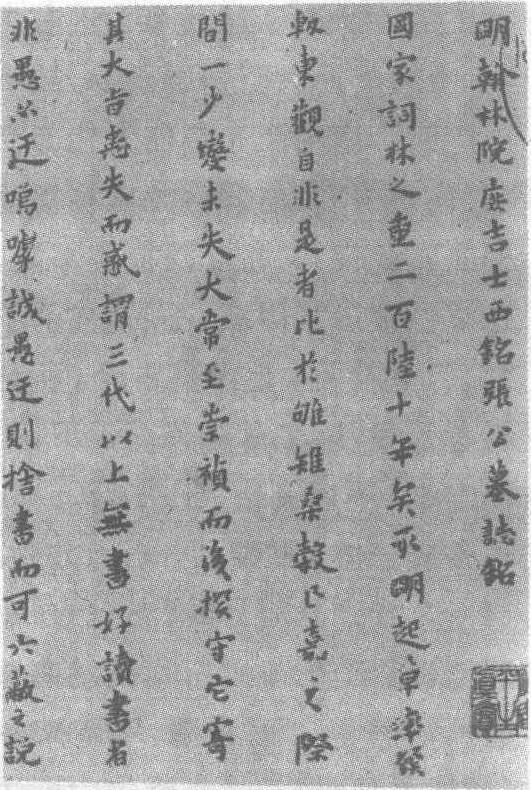黄道周楷书张溥墓志铭卷
明。纸本。纵28.7厘米,横193.8厘米。北京故宫博物院藏。黄道周(见《黄道周楷书诗卷》条目)书。此作书卷,是黄道周为其好友,崇祯间进士,复社名士张溥所撰并书墓志铭,楷书,撰于南明弘光元年(公元1645年),工整遒劲,结体与用笔融进北碑意味,独具风神,是黄道周晚年代表作品。卷后有周永年、梁章钜、何绍基跋。

| 词条 | 黄道周楷书张溥墓志铭卷 |
| 类别 | 中文百科知识 |
| 释义 | 黄道周楷书张溥墓志铭卷明。纸本。纵28.7厘米,横193.8厘米。北京故宫博物院藏。黄道周(见《黄道周楷书诗卷》条目)书。此作书卷,是黄道周为其好友,崇祯间进士,复社名士张溥所撰并书墓志铭,楷书,撰于南明弘光元年(公元1645年),工整遒劲,结体与用笔融进北碑意味,独具风神,是黄道周晚年代表作品。卷后有周永年、梁章钜、何绍基跋。
|
| 随便看 |
开放百科全书收录579518条英语、德语、日语等多语种百科知识,基本涵盖了大多数领域的百科知识,是一部内容自由、开放的电子版国际百科全书。